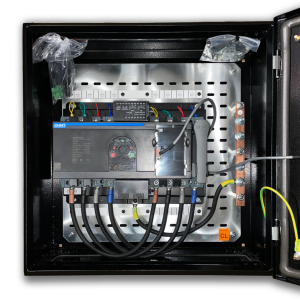The Evolution of Bypass Switches: Past, Present, and Future
In the ever-evolving landscape of network security and data protection, bypass switches have emerged as a crucial component in ensuring uninterrupted network availability and optimal performance. These unassuming devices have come a long way since their inception, shaping the way we manage and safeguard our digital infrastructure. This blog takes a deep dive into the evolution of bypass switches, exploring their past, present, and the exciting possibilities that the future holds.
The Past: Simplicity and Essential Functionality
The origins of bypass switches can be traced back to the early days of network management when engineers sought ways to prevent network outages caused by equipment failures or maintenance. In their simplest form, these switches acted as manual failover mechanisms, allowing network administrators to reroute traffic around a malfunctioning device. While effective to some extent, these early bypass switches had limitations in terms of flexibility and automation.
As technology advanced, the demand for more sophisticated solutions increased. By the late 20th century, the first generation of automated bypass switches emerged. These devices could detect device failures and switch traffic automatically, reducing the downtime associated with manual intervention. However, they still lacked the intelligence and customisation options required for the complex networks that were beginning to emerge.
The Present: Intelligence and Adaptability
The present-day bypass switches represent a paradigm shift in network management. These devices have evolved into intelligent and adaptive solutions that not only detect and mitigate failures but also optimise traffic flow for enhanced performance and security. With the rise of cloud computing, virtualisation, and distributed networks, bypass switches have adapted to meet the challenges of modern IT environments.
Advanced bypass switches today offer features like real-time traffic analysis, deep packet inspection, and even the ability to load balance traffic across multiple security appliances. This level of intelligence enables network administrators to make informed decisions about traffic routing, ensuring that critical data remains protected while maintaining optimal network speeds.

The Future: Embracing Technological Disruptions
As we peer into the future, the evolution of bypass switches is set to be deeply intertwined with emerging technologies. Here are a few trends that will shape the future of bypass switches:
- 5G and Edge Computing Integration: The proliferation of 5G networks and edge computing will require bypass switches that can seamlessly manage the increased complexity of distributed networks. These switches will need to handle massive amounts of data while maintaining low latency and high reliability.
- AI and Automation: Artificial intelligence and machine learning will play a crucial role in enhancing the capabilities of bypass switches. Predictive analytics and automated response mechanisms will enable these devices to preemptively reroute traffic to avoid potential failures.
- Zero-Trust Security: Bypass switches will become integral components of zero-trust security architectures. They will provide granular control over traffic flow, ensuring that only authorised and secure connections are allowed while potential threats are isolated.
- Interoperability and Standardisation: As networks become more complex and heterogeneous, bypass switches will need to adhere to industry standards to ensure seamless integration with a wide range of devices and technologies.
In conclusion, the evolution of bypass switches reflects the rapid advancements in networking, security, and data management. From their humble beginnings as manual failover mechanisms to their current role as intelligent traffic orchestrators, bypass switches have proven their indispensability in modern IT landscapes. Looking ahead, these devices are poised to embrace emerging technologies, shaping the future of network resilience, security, and performance. As we navigate this ever-changing digital realm, one thing remains clear: bypass switches will continue to be at the forefront of safeguarding our networks and ensuring uninterrupted connectivity.
If you have any questions about bypass switches contact us now.
